Text
What is Automated Regression Testing? & Best Practices
What is Automated Regression Testing?
Automated regression testing is a software testing process. It repeats previously developed test cases to ensure that recent changes in test cases or enhancements to the software have not negatively affected its existing functionality and efficiency.

In other words, there is always a risk of damage to existing features when new code is added or changes which are made to a software application. Regression testing helps to tackle this risk by systematically retesting the software parts.
Automation in regression testing means using automated test tools or scripts to run test cases instead of manually. This process increases productivity and accuracy. As it allows repeated testing without the need for manual interference. Automated regression testing is particularly useful in projects that require frequent updates or ongoing integration/deployment processes. In this manual testing alone may not be the best option due to time consumption and the number of tests required in regression testing.
Why choose automatic regression testing?
Regression testing is one of the important ways to ensure that recent changes to your software have not negatively impacted existing services and software performance but manual regression testing can be time-consuming, error-prone, and costly. While automation testing can significantly reduce testing time and testing costs. Moreover, it will improve the efficiency and accuracy of the test.

Best practices for automating regression tests
Comprehensive Test Coverage: During the software testing process, you should prioritize the basic functionality and features of regression testing. It will greatly improve your independent testing and help you focus on the areas of greatest impact.
Modular Test Design: You should divide your test case into smaller reusable modules. This modular approach can increase the maintainability and scalability of the trial and facilitate efficient trial design and execution.
Version Control Integration: Regression testing should be integrated into version control systems such as Webomates to facilitate integration with test management. This will ensure that your test is always up to date with the latest regulatory changes.
Continuous Integration (CI) Pipeline: Add regression testing to your CI pipeline to identify problems early in the development lifecycle of software. It integrates easily with popular CI/CD tools and enables automatic testing as part of your workflow.
Regularly maintain testing: Update and maintain your automated test case regularly to keep up with changes to the application that is tested. A good interface simplifies testing and maintenance tasks. It will ensure that your testing remains robust and reliable over time.
Automated Visual Regression Testing
Visual regression testing is essential to detect visual changes during software updates. It offers advanced testing capabilities. Also, it will allow you to compare visuals of your application across different platforms and applications. With pixel-perfect accuracy and a stable comparison system, you can detect optical anomalies with accuracy and reliability.
Unlock the Power of Automation with Webomates
Whether you are a software developer, tester, or quality assurance professional, with Webomates you can empower your testing efforts and you can confidently deliver superior software. With our comprehensive automation solutions and best practices for regression testing, you can speed up release cycles, and reduce errors.
For more information click here Automated regression testing
#AutomatedRegressionTesting#RegressionTesting#AutomatedTesting#Webomates#Softwarebenefits#Aiautomation#Automationplatform
0 notes
Text
How Agile Testing fuels Company’s Digital Evolution

The Challenge: Adapt or Fade
The rapid technological advancements are posing significant challenges for businesses. The pressure to innovate, embrace the latest digital technologies, release applications faster, and meet the customer expectations of customers is higher than ever.
To stay competitive and thrive in this cut-throat market, businesses must keep up with the latest industry trends and transition towards becoming truly digital.
The Solution: Agile Testing
Similar to how the application development has evolved, the testing too has undergone a significant Agile transformation.
Agile Testing is more than just a methodology. It’s a strategic approach that integrates collaboration, efficiency, adaptability, and quality of the application throughout the application development lifecycle, beginning at the requirements phase.
In the State of Agile survey, 61% of respondents said they are adopting agile to both improve process and deliver efficiencies and for Digital Transformation.
The key principles of Agile Testing are:
Conduct testing in parallel with development in short, time-boxed, iterative cycles (sprints)
Adapt to any changing requirements, allowing testing priorities to be adjusted as needed during the development process.
Foster a culture of continuous feedback and constant communication between development and testing teams.
Test early and frequently throughout the development lifecycle.
Encourage collaboration across stakeholders, including business, product owners, and end-users, to ensure that the development and testing objectives align with the overall business objectives.
Agile Testing: A Catalyst for Efficiency in Digital Transformation
Digital transformation across any industry type involves using technology to enhance customer experiences, optimize processes, and enhance efficiency and productivity.

1.Responsive to Changing Requirements
Due to changing business needs and customer expectations, agile projects often involve continuous change and iteration, including modifications to requirements, design, and functionality. These changes require the testing team to adapt quickly and modify test cases accordingly.
Example: In a banking platform, the business team frequently introduces new features like payment options or loan schemes. Agile Testing enables the testing team to quickly adjust test plans and execute regression tests, ensuring continuous delivery.
Webomates AI Value-add: When requirements change, AI-driven tools can quickly adapt and regenerate relevant test scripts. Webomates also applies AI and ML algorithms to its self-healing test automation framework to dynamically adapt its testing scope to the changes.
2.Early Defect Identification
As most of the code defects are introduced during the coding phase, testing activities should begin as early as possible in the development process. Regularly testing code with each code increment guarantees identifying and fixing of defects, and also saves a lot of time and money.
Example: Early detection of any coding errors, integration, or compatibility issues within the features of the application allows for immediate resolution, preventing delays in the project timeline.
Webomates AI Value-add: By testing early and often, Shift Left Testing helps to test each feature the development team develops and provides quick defect data so that they can fix it. It also applies AI/ML to test cases and script creation/healing, execution, and analysis of execution results to reduce mission-critical defects.
3.Deliver working Software Frequently
The application is built in iterative development cycles. Agile Testing is integrated into each sprint, allowing testers to test all user stories and features within that release. This ensures that each code change is validated immediately.
Example: In a banking application, the team can develop, test, and launch an initial version with basic functionalities like login and balance checking, and release advanced features in subsequent iterations. Read for more https://www.webomates.com/blog/agile-testing/how-agile-testing-fuels-companys-digital-evolution/
0 notes
Text
Generative AI: A Force for Change or Replacement?

The dawn of Generative AI marks the beginning of a new era, much like the rise of the Force wielders in the Star Wars galaxy. Applications such as ChatGPT, GitHub Copilot, and DeepArt have sparked a revolution, unleashing a wave of innovation and productivity that was once unimaginable.
Generative AI possesses the ability to mimic human capabilities to an astounding degree, leading some to fear its potential to replace humans. However, it’s crucial to recognize that Generative AI is meant to empower rather than replace humans.
Leaders in various organizations are realizing that by fostering collaboration between humans and Generative AI, they can achieve extraordinary feats.
So, what are the potential benefits of this collaboration for businesses?
Generative AI Use Cases

Test Case and Data Generation
Generative AI can assist in generating comprehensive test cases by analyzing application requirements and existing code. It can cover positive and negative scenarios, as well as edge cases.
For the banking application, it can generate test cases for tasks like creating new accounts, transferring funds between different account types, and testing transaction limits. It can create sample customer account details, names, addresses, and other necessary data.
Code Completion
Generative AI can provide developers with recommendations and code snippets to speed up coding tasks. By understanding code semantics and structure, it offers accurate suggestions.
Examples include CodeAI and GitHub’s CoPilot, which utilize contextual understanding and trained models to accelerate coding processes.
Code Optimization
Generative AI algorithms can analyze code to identify performance bottlenecks and propose code refactoring suggestions. For instance, it can pinpoint inefficient algorithms or resource usage, offering alternative implementations to improve execution speed.
Defect Identification and Prediction
Generative AI aids in identifying coding errors and deviations from standards. By learning from previous defects, it can detect patterns and predict potential defects. For example, Webomates’ AI Defect Predictor helps reduce triage time for development and QA teams, enabling proactive defect correction.
Documentation Generation
Generative AI automates the documentation process by extracting data from code, test cases, and other resources. Accenture is exploring the use of OpenAI LLMs to automatically generate documentation, saving time and effort for developers and testers.
How can Webomates Help?
Generative AI is a powerful ally in software testing and automation efforts, akin to the Force in the Star Wars saga. Webomates offers AI-driven testing solutions to optimize testing across various scenarios.
Schedule a demo to unlock the full potential of our AI-driven software testing solutions, which can enhance productivity, accelerate product releases, and propel your business forward. Contact us at [email protected] to learn more.
0 notes
Text
The Power of Low Code/No Code Test Automation

If you have been reading my blogs and bytes of wisdom, which I occasionally post on LinkedIn, you would know how much I enjoy using a good analogy. So here we go — in Greek, today.
In the epic quest of software development, the teams navigate treacherous terrain riddled with unknown, and sometimes known, bugs and errors. With Test Automation as their trusted ally, they brave the coding complexities to ensure the quality of their products.
But are they making the right choices?
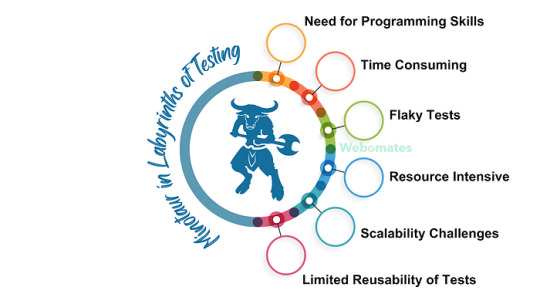
1. Need for Programming Skills: Open source platforms demand a higher level of programming proficiency.
2. Time-Consuming: Creating and maintaining tests can be time-consuming, especially for complex applications undergoing frequent changes.
3. Flaky Tests: Instabilities in tests due to synchronization issues, dynamic content, or environmental variations.
4. Resource Intensive: Dedicated resources may be needed for script development, leading to higher costs.
5. Scalability Challenges: Scaling test automation with open source tools becomes challenging as application functionalities increase in complexity.
6. Limited Reusability of Tests: Test scripts in open-source tools may lack reusability.
To overcome these challenges, the shift to Low-Code/No-Code (LCNC) platforms proves to be the right choice.
Implementing LCNC technologies can revolutionize work processes, automating tedious tasks and allowing teams to focus on strategic, high-value work. According to McKinsey, “There’s expected to be a 70% growth in the adoption of low-code/no-code by 2025”.
Let’s see what power these platforms hold to help you navigate the challenges faced during software development and testing.
Power of Low-Code/ No-Code Platforms

1. Shorter Time to Market: Code templates and pre-built features reduce development time, resulting in a quicker time to market.
2. Reduced Learning Curve: Minimal coding experience is required, enabling easy use of visual interfaces and pre-built components.
3. Accelerated Test Creation and Maintenance: Drag-and-drop functionality and reusable components speed up the test creation and maintenance process.
4. No more Flaky Tests: LCNC platforms minimize reliance on intricate coding, addressing issues related to dynamic elements and reducing flaky tests.
5. Enhanced Collaboration: Encourages collaboration between business analysts and testers, making development and testing cycles more agile.
6. Reduced Costs: Less dependency on developers for UI tests, allowing testers to contribute to automation and reducing associated costs.
7. Scalability: Handles complex test scenarios and scales according to changing testing process needs.
8. Increased Productivity: Developers can focus on more critical business problems instead of spending hours coding.
9. Reusability: Emphasizes modular designs, allowing for the creation of reusable components and test flows.
The power of LCNC platforms is nothing short of a divine revelation. Businesses are harnessing the power of these platforms to elevate their testing rituals and hasten the delivery of their digital progeny. Yet, in this quest for excellence, it is prudent to acknowledge that specialized guardians are still needed to navigate the labyrinths of software development and perform feats beyond the reach of automated tools.
Much like Athena, the goddess of wisdom, Webomates CQ provides codeless test automation services, seamlessly integrating with various automation frameworks. It bestows the ability to modify test cases effortlessly, ensuring a harmonious coexistence between mortal testers and the divine automation realm.
If you want to discover how codeless testing can help you in achieving excellence, reach out to us at [email protected].
You can read the full blog here
0 notes
Text
Benefits of Low-Code/ No-Code Test Automation

Technology is the primary force behind any transformation. And the role of testing is changing, moving from being overlooked to becoming a value creator. In today’s world, it becomes extremely critical for enterprises to adapt to the fast-changing requirements and customer expectations.
Test Automation plays an important role in allowing businesses to boost productivity, develop new products rapidly, and enhance the development and testing process thereby leading to increased customer experience.
Many teams use Open-source platforms for their test automation. Although such platforms offer extensive customization, flexibility, and a broader community ecosystem, it’s essential to recognize the potential bottlenecks associated with them.
Bottlenecks of open source platforms:
Requires a higher degree of proficiency in programming languages and frameworks.
Creating and maintaining tests is time-consuming, especially for complex applications with frequent changes.
Flaky tests along with factors such as synchronization issues, dynamic content, or environmental variations can contribute to the instability of tests.
Open-source tools may require dedicated resources for script development, leading to higher costs.
Scaling test automation efforts with open source tools is challenging especially when the application’s functionalities increase, leading to increased complexity.
Test scripts in open-source tools may lack reusability.
Developers need a lot of hands-on experience with programming languages before they can be productive.
Development of applications takes more time.
Shifting to low code/no code platforms can offer a more accessible and efficient testing process, especially for teams looking to enhance collaboration and accelerate testing cycles.
Transforming the testing landscape with LC/NC platforms
Low-Code platforms, also known as low-code application development platforms, minimize or eliminate the manual coding required to develop and deploy software applications. They have a panel of visual elements that enable development without programming.
No-Code platforms allow people with no knowledge or technical training in software development to create applications without programming a single line of code.
Teams can use Low-Code/No-Code (LCNC) technologies to radically change how work gets done. It can enable teams to automate more tedious, error-prone processes that can occasionally take attention away from more strategic, higher-level work that adds greater value to the company.
According to the Mckinsey report, there will be 70% growth in the market and adoption of new application development that will leverage low-code/no code by 2025 (vs <25% in 2020).
Benefits of Low-Code/ No-Code Platforms

1. Shorter Time to Market
Less time is spent on development using such platforms. With code templates and pre-built features, you can significantly improve your application’s release time, resulting in a shorter time to market for new products. significantly
2. Reduced Learning Curve
It requires minimal coding experience and provides a visual interface and pre-built components making it easy to use. Using a component-based approach enables developers to develop applications without writing any code.
3. Accelerated Test Creation and Maintenance
Creating and maintaining tests is faster due to the drag-and-drop functionality and reusable components. This will ensure testing cycles are much faster compared to traditional test automation.
4. Authoring test scripts
Offers a visual interface and drag-and-drop functionality, reducing the time and effort required to author test cases.
5. Address issues related to Flaky Tests
The LC/NC platforms minimize the reliance on intricate coding and have features for handling dynamic elements and reducing the flaky tests. You can have AI-powered automation with self-healing capability to deal with synchronization issues or dynamic elements.
6. Enhanced Collaboration Between Teams
Quality increases when teams work together. These platforms encourage collaboration by allowing business analysts and testers to contribute to test automation efforts from very early stages, making the development and testing cycles more agile and focused on the end-user experience.
7. Reduced Costs
You can reduce the dependency of developers in creating UI tests. Testers can also contribute to automation, reducing the need for specialized development skills and associated costs of training.
8. Scale with Ease
These tools can handle complex test scenarios and also scale up or down according to the changing needs of the testing process.
9. Increased Productivity
Rather than spending hours coding, developers can be productive by focusing on more important business problems.
10. Reusability
These platforms emphasize on modular designs, allowing developers/testers to create reusable components. You can reuse the test flows across test plans. To know more about this blog : Benefits of low code test automation
1 note
·
View note
Text
Automate to Elevate: The Complete Guide to Test Automation

Test Automation is one of the major enablers for the explosion of different types of software and apps in the market. According to AIMultiple, “33% of organizations are planning 50–75% of their automation process, while 20% are planning to automate more than 75% of their testing process.”
What Is Test Automation?
Test automation refers to an approach to running your tests with minimal human intervention.
For a long time, developers used to automate their unit testing alone. In this process, the tests check whether a given function is working properly or not. Then came automated frameworks like Selenium, which helped automate the testing of modules and entire applications. These frameworks replicate user actions and interact with your UI. For example, they will scroll down, click a button to see how it is responding, locate the entry text box, and fill it out. With these actions, you can check whether the UI is working correctly or not.
Benefits of Test Automation
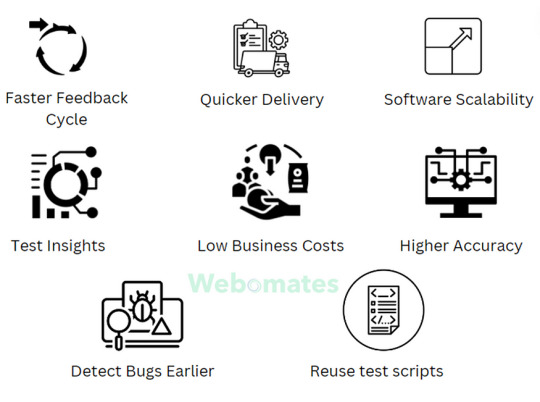
How Test Automation fares in comparison to manual testing?

As you can see, test automation brings in more benefits to the table, it is efficient and reliable.
What kind of Tests should be Automated?
There are some factors that you need to consider while deciding whether to automate a test or not. Here are the types of tests that you need to automate:
Recurrent: You need to automate the tests that are repeated regularly.
Determinant: The system should be able to clearly determine whether the test is right or wrong.
Business Critical: If any test is important and requires attention to detail, it is better to automate it.
There are some other tests that can be automated as well. We have curated an in-detail blog discussing this topic. Make sure to read that.
How to Automate the Tests?
When it comes to test automation, there is a 4-step process that you need to follow:
Choosing the right tool that aligns with your requirements.
Defining the test strategy and test case.
Choose the right framework and ensure that your test cases can run in it.
Run the test and evaluate
Test Automation Best Practices

Select the Right Tests to Automate
Not all tests are suitable for automation. It’s essential to choose the right tests to automate. Typically, tests that are repetitive, time-consuming, critical, and require frequent execution are the best candidates for automation. Prioritize tests based on their impact on the application and consider factors like ROI (Return on Investment) and stability. Complex, constantly changing tests may not be the best candidates for automation.
Let the Test Cases Stabilize Before Automating
Before automating tests, ensure that the manual test cases are stable and well-defined. Frequent changes in the application can result in a high maintenance overhead for automated tests. Stabilizing the test cases means that the application’s functionality and user interface are relatively stable, reducing the likelihood of frequent test script updates. This practice helps avoid unnecessary rework and maintenance. Click to know more about this blog : Test Automation
1 note
·
View note
Text
10 Lifesaving AI Uses Every Developer/Tester Should Know

Software and applications have become an integral part of every industry. According to Statista Market Insights, “The world software revenue was estimated to be around $659Bn in 2023.”
As good as it sounds, this major surge in software or application requirements has made it difficult for software teams to focus on quality and speed at the same time and this is when AI comes to the rescue. From driving high-performing software solutions to interactive applications, AI plays a very important role in the software development lifecycle.
According to this report from Market Research , the Software Quality Assurance Market is expected to register a CAGR of 9.6% and USD 14.01 billion by 2025. AI is one of the contributing factors to this growth.
This article focuses on how AI is helping developers and testers alike in making the software development process more efficient.
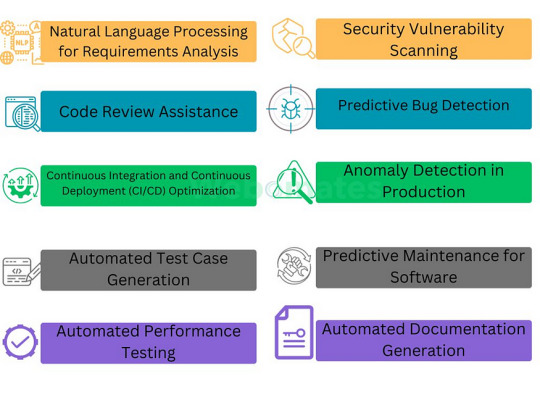
Natural Language Processing for Requirements Analysis
According to an IAG consulting study, “Companies with poor requirements definition and management spend on average $2.24 million more per project on their major projects.”
In an Agile environment, it’s a daunting task to interpret ever changing customer requirements. This is when AI comes to the rescue by processing and analyzing product requirement documents with remarkable accuracy. AI-driven NLP algorithms extract essential information and can present the analysis in desired format, helping the teams comprehend project requirements more efficiently.
Code Review Assistance
Code reviews are crucial for maintaining code quality, but they can be time-consuming, if done manually. AI technology can help with code analysis, identify code quality issues, suggest improvements, and even automate some parts of the review process. This accelerates development cycles while ensuring higher code quality.
CodeScene, one of the top code reviewing tools of 2023 leverages AI to automate the entire process and provides instant feedback as well.
Continuous Integration and Continuous Deployment (CI/CD) Optimization
Efficient CI/CD pipelines are the backbone of modern software development. AI helps with codeless testing, offers better test coverage and also comes with a reliable defect management system. Apart from that it also offers fool proof tracing to debug efficiently.
Automated Test Case Generation
Manual test Case generation for multiple scenarios can be tedious and error-prone. Additionally, test case updation can be very challenging due to changes done to reflect bug fixes and incorporate new requirements. AI-based test automation saves time, increases testing efficiency, and reduces human error.
We at Webomates use generative AI extensively to accelerate our test case creation process thereby reducing efforts significantly. Want to know more? Read our blog “Generative AI is a game changer in Software Testing”
Automated Performance Testing
Performance testing measures, validates and verifies response time, stability, scalability, speed and reliability of a system. AI can automate performance testing, simulating thousands of users and identifying performance bottlenecks. According to Dunn & Bradstreet, 59% of Fortune 500 companies have experienced 1.6 hours of downtime per week at the least. This has affected their revenue and brand reputation as well. Having AI based automated performance testing will prevent such issues and ensure smoother operation.
Security Vulnerability Scanning
Security is paramount in software development. AI can scan code for security vulnerabilities, including common issues like SQL injection or Cross-Site Scripting (XSS). Identifying and mitigating these vulnerabilities early can save both time and money.
Canva, a graphic design platform, has grown rapidly, and being a cloud company, it needed extra protection so that its tool wasn’t compromised, and this is when it deployed AI into its development process. This has helped them prevent some critical malicious attacks.
Predictive Bug Detection
AI can predict potential bugs in code before they become critical issues. By analyzing historical data and code patterns, it alerts developers to areas that may require extra attention. This proactive approach helps in delivering more reliable software.
Anomaly Detection in Production
In production environments, AI shines in detecting anomalies and issues. It monitors real-time data, identifying deviations from the norm and alerting operators when something goes wrong. This proactive monitoring minimizes downtime and enhances system reliability.
Capgemini has incorporated AI powered Anomaly Detection to identify any kind of deviations in the data logs during the development process.
Predictive Maintenance for Software
As per Webomates insights, “Software maintenance takes up 80% of the efforts and resources of an organization.” This is where self healing steps in. Self healing detects the changes in properties and automatically updates them with new attributes. This way, one can be assured that the designed test cases are functional.
Webomates took a step further and has incorporated our patented technology called AiHealing, which will address these errors without human intervention.
Automated Documentation Generation
Documentation is often an afterthought, but AI can change that. It automates the generation of documentation from code and tests, ensuring that software remains well-documented throughout its lifecycle. This benefits not only developers but also stakeholders and end-users. There are many tools available in the market for generating documentation from code like Docify, Mintlify, Docuwriter.ai and many more.
Conclusion
AI can simplify multiple tasks that are involved in the development lifecycle. Keeping up with the latest advancements is very important to ensure that you are ahead of the game.
If you are interested in transforming the way you have been testing and want to opt for a new, efficient, and faster process! Drop us a line at [email protected].
0 notes
Text
How To Scale Test Automation

What is test automation?
Test automation, which is the key to continuous testing, is a technique to automate predefined repetitive testing tasks, using various test automation tools and testing scripts. In an increasingly agile world, test automation aids in improving feature velocity and reducing the duration of release cycles.
According to the Markets and Markets report, the global Automation testing market size is expected to grow to USD 49.9 billion by 2026, at a Compound Annual Growth Rate (CAGR) of 19.2% during the forecast period (2021-2026).
But the question is, are the organizations equipped well to handle this growth?
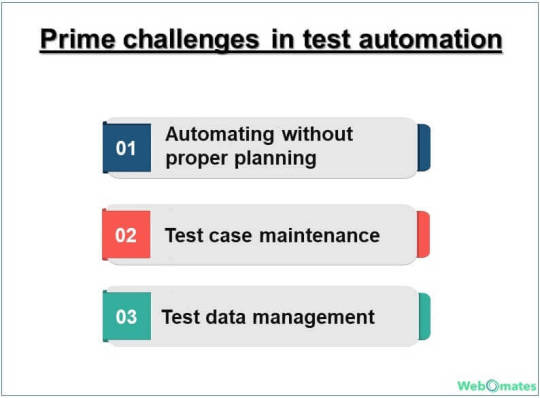
What is scalability in test automation?
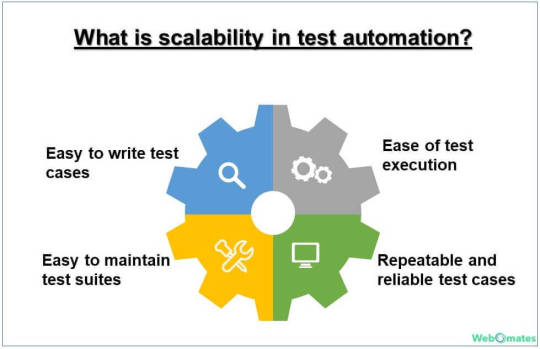
Easy to write test cases
Manual test case writing can be a tedious task and after a while, it gets boring and error-prone. Test automation addresses this problem to a certain extent, but if that too needs manual intervention/checking, then the whole purpose of automation gets defeated. To achieve scalability, test automation should be able to generate test case scripts and update them periodically.
Ease of test execution
The test execution process has to be simple, quick and should have a fast feedback loop. It encourages quick analysis and rectification of the issues, thus making the process scalable in case there is a major change or upgrade.
Easy to maintain test suites
People dread changes, especially if they lead to an extra amount of work in changing test cases to keep them in sync with the latest versions. Test automation steps in here and takes off the load. Scalability quotient depends on how easily the test scripts get updated.
Repeatable and reliable test cases
What is the point of having an automated test suite if it breaks every now and then? The test cases have to be reliable and can be executed multiple times making test results trustworthy.
Achieving scalable test automation

Automate the right tests
Not every test can be automated. You have to identify the right tests to automate to ensure that test automation is scalable and you get the best value out of it.
Here is a quick checklist to help you in making the decision. Automate the tests that
Are repetitive and span multiple builds
Require multiple input combinations
Verify and validate critical functionalities
Are executed in different test environments and require different hardware and software configurations
Are prone to errors if performed manually
Are reusable, maintainable, and resistant to changes
Codeless test automation
Now that you have identified the tests that can be automated and render scalability, won’t it be great if scriptwriting is minimal or even better, not required? This is where codeless test automation steps in.
Codeless testing spurs the whole testing process by quickly generating the test cases and effortlessly addressing any modifications during testing, thus increasing the reusability and maintainability quotient of the test cases.
Defect rectification and re-testing becomes much easier with codeless testing. Test engineers can conduct multiple test runs without worrying about modifying long lines of code.
If you wish to read in detail about codeless test automation, then do check our article “Top 5 benefits of codeless testing”.
Stabilize the tests before adding them to regression suites
Let the tests stabilize before adding them to your test suite if you do not wish to spend precious resources on identifying what went wrong later. It is highly likely that the tests may fail because they were not stable and reliable.
Self-healing test cases
The last thing that you would want is that your application crashes because you forgot to update the test case for the minor changes in requirement or bug rectification.
Statistically speaking, approximately 20% of the test automation cost is in test script creation, and a major chunk, i.e. 80% is in test execution and test case maintenance. Clearly, it is a daunting task to keep test repositories up to date, if self-healing of test cases is not done.
That is precisely why we need a test automation tool that can understand these changes and effortlessly self-heal the tests and re-execute them within the same cycle.
Measurable KPI’s for reporting purposes
How do measurable KPIs render scalability? They ensure that you get the right value of test automation by presenting tangible values in the reports. They also help in understanding whether the right test cases have been automated, which takes us to our very first point of this discussion.
Better collaboration
Better collaboration and enhanced communication aids in the quicker resolution of issues and improve transparency between the teams. This consequently leads to overall process improvement since all teams are on the same page of understanding and can work towards the common goal of how to get the best ROI from test automation.
Choose the right tool
Choose the right testing tool which;
Is intuitive and easy to use
Is easy to integrate with an existing system
Supports multiple platforms
Enhances the values of test automation by leveraging the power of Intelligent test automation
Incorporates the principles of Shift left testing
Is feature-rich and gives best value for your investment
We have compared a few leading testing tools which are available in the market in our article “AI test automation tools to look out for in 2022”. For additional reading, you can also go through “How to choose the right automation testing tool”.
Webomates provides intelligent test automation solutions with intelligent analytics. It leverages the power of data processing, analysis, reasoning, and machine learning to provide an end-to-end testing solution for your business.
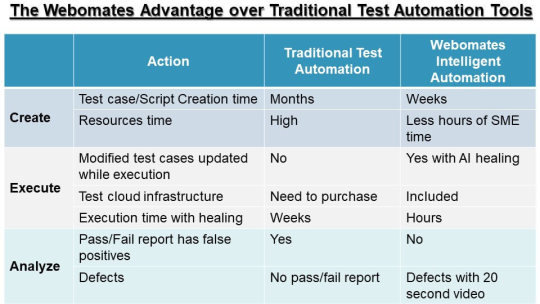
If you are looking for a one-stop solution for your testing needs then look no further, reach out to us at [email protected].
If you liked this blog, then please like/follow us Webomates or Aseem.
0 notes
Text
Exploring the Software Testing Trends Set to Dominate 2024

Understanding the Key Testing Bottlenecks
It goes without saying that modern teams need to continuously innovate, adapt, and embrace the newest trends in order to stay competitive and deliver customer-centric solutions. Despite remarkable advancements, many teams still consider that testing is a bottleneck, responsible for more delays than any other part of the application development process.
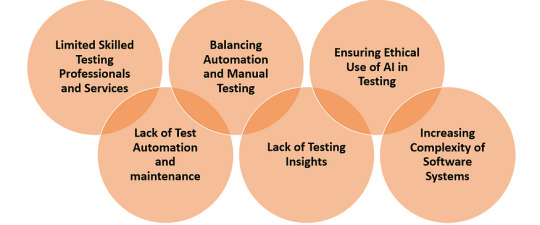
1. Limited Skilled Testing Professionals and Service
“Too little testing is done too late.”
“The developer does the testing.”
“Code reviews and testing processes take time due to lack of testers.”
These are some of the common reasons for the lack of on-time testing. With traditional ways of identifying defects at the last stages, there is less time to fix defects. This can significantly delay product launches.
2. Lack of Test Automation and maintenance
Implementing automated tests is an investment. Although many firms are implementing test automation in some form or another, very few teams have fully automated all of their QA processes. Also, the maintenance of automated tests is more expensive than that of manual tests.
It’s also very critical to understand when to automate, what to automate, and what NOT to automate to avoid automation failures.
3. Balancing Automation and Manual Testing
Striking the right balance between automated and manual testing poses a challenge for QA teams. While automation is crucial for repetitive tasks, it still lacks cognitive ability. There are aspects of testing that still require human intuition and exploration which cannot be ignored.
4. Lack of Testing Insights
Lack of testing insights lead to issues going undetected until later stages, such as user acceptance testing or even production leading to higher costs and lower customer experience (CX). Without proper insights, teams find it difficult to understand the defect reports and find solutions on-time.
5. Ensuring Ethical Use of AI in Testing
With the increased adoption of AI in testing, ethical considerations have come to the forefront. Ensuring the responsible and ethical use of AI in testing, addressing biases, and maintaining data privacy are concerns that need careful attention.
6. Increasing Complexity of Software Systems
With rapidly evolving technologies like the Internet of Things (IoT), Big Data, and Generative AI, modern systems are becoming increasingly complex, making it difficult to test comprehensively.
Testing Trends Set to Dominate 2024
The lessons learned from the challenges of 2023 set the stage for advanced technologies and new methodologies that will shape the market in 2024.

1. Cloud-based Testing
Instead of relying on on-premises infrastructure, Cloud-based testing is a method of using cloud-based infrastructure, to run tests and test environments.
By using cloud-based infrastructure, teams can be more cost-effective and scalable as they can access a wide array of testing tools and environments, and easily scale up and down the test environments as per the changing requirements.
How can you get there?
You can move to the cloud today with Webomates — a Testing-as-a-service portal to test your application’s functionality! Its end-to-end testing framework helps you in the planning and execution of a cloud migration, along with pre-built solution blueprints, proven tools and accelerators, and dashboards for real-time monitoring.
2. AI/ML-driven Intelligent Test Automation
AI/ML algorithms will make testing smarter, with better test case generation, self-healing features, predict defects, and increased adaptation to evolving application interfaces. Predictive models can assist in deciding where, what, and when to test.
You can use AI in self-healing automation where it enables software to automatically detect and correct issues in test scripts when the UI changes, reducing the need for manual intervention and any maintenance efforts required.
How can you get there?
You can start embracing the key Intelligent Test Automation features:
Exploratory Testing — It helps to reveal bugs that would go undiscovered during the structured phase of testing. You can perform test design and test execution at the same time.
Efficient defect triaging — You get an in-depth analysis of automation failures to help the teams reduce their triage time. Tools like the AI Healing help you to accelerate defect prediction and resolution.
A combination of Shift Left Testing and Self-healing capability can help you test your application right from the beginning of the development process and also fix defects in regression tests quickly.
3. Security Testing

How can you get there?
Integrate testing in your CI/CD process by executing automated security tests as a part of the unit testing process. Conducting in-depth Performance Testing and Security testing ensures that the application does not have any web vulnerability that could potentially expose any sensitive data to an intruder or an attacker.
4. No-Code/Low-Code Testing
One trend that is picking up steam quickly is the shift to low-code/no-code (LCNC) platforms. Developers are using No-Code/Low-Code platforms to create, execute, and manage applications without the need for programming or scripting skills. But the complexity of testing these apps rises along with the use of low-code/no-code platforms.
This is where Low-code/no-code test automation can help where test cases can be created rapidly using visual components. With drag and drop functionalities to design test cases, it eliminates the need for manual coding.
How can you get there?
You need the power of AI/ML to generate the test scripts. Webomates CQ can seamlessly integrate into your current CI/CD pipeline and create test scripts that are compatible with various automation frameworks.
5. Mobile Testing
Today’s users rely on apps for everything — banking, retail, healthcare, entertainment — making mobile testing very important to deliver a seamless user experience across various devices, operating systems, screen sizes, and resolutions. Mobile testing involves testing on real devices along with emulators to ensure the application behaves perfectly.
Mobile testing will help you to:
Ensure that the application’s UI is consistent across different devices and platforms.
Verify how the application handles different levels of user activity and traffic.
Evaluate the overall user experience and ease of navigation
How can you get there?
Webomates has integrated BrowserStack, Saucelabs, and AWS devices to help users test their app layouts and designs on real devices. It also supports multi-platform cross-browser testing along with crowdsourcing for network testing.
Conclusion
These are the emerging Software testing trends that one should watch out for in 2024
Teams need to remain aware of the frequent developments in the industry. The arrival of large language models (LLMs) and enhanced AI tools have set the stage for a revolution in testing, one where the software development bottlenecks are addressed, allowing for more streamlined and efficient processes.
At Webomates, we believe in creating a seamless integration between AI, developers and testers, bringing together the best of all worlds.
0 notes
Text
Test Infrastructure

What Is Test Infrastructure?
First things first, let us understand what test infrastructure is. Testing is a continuous process and proper infrastructure can make it a hassle-free activity.
A testing infrastructure is the essential framework and tools used in software development to systematically assess and validate a software system’s quality, functionality, and performance. It encompasses testing environments, automation frameworks, and methodologies, ensuring thorough testing and defect detection. This infrastructure is pivotal in maintaining software reliability and meeting user expectations.
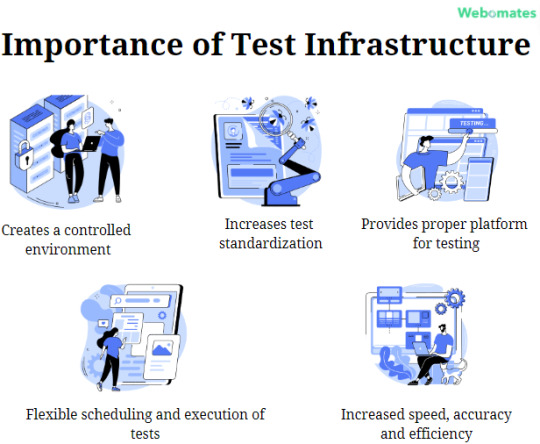
Benefits of Test Infrastructure
While setting up test infrastructure takes some time, it bears so many benefits. Here are some of them:
Reliability : Test infrastructure ensures consistent and dependable testing.
Efficiency : It speeds up the testing process and reduces manual effort.
Scalability : Easily accommodate testing for various scenarios and scales.
Reproducibility : Enables the replication of test conditions for debugging.
Coverage : Helps identify issues across different parts of the system.
Continuous Integration : Facilitates automated testing in the development pipeline.
Cost Savings : Reduces the need for manual testing, saving resources.
Documentation : Provides a clear record of test cases and results.
Early Detection : Identifies issues in the development phase, saving time.
Regression Testing : Automates the checking of previous functionalities.
Six Components of Test Infrastructure
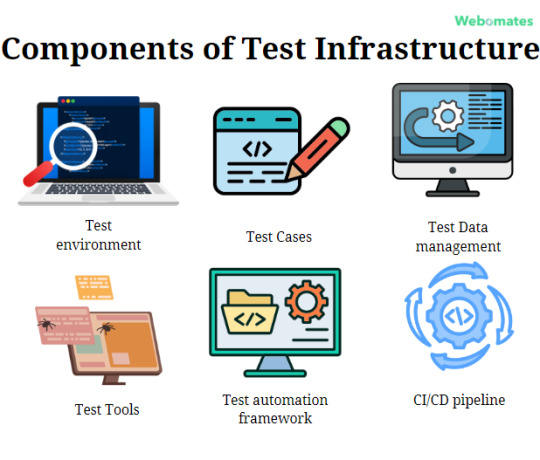
Challenges of Test Infrastructure
While test infrastructure simplifies so many things, it comes with its own set of challenges.
Infrastructure Complexity
You need to be an expert in establishing and maintaining a test infrastructure. Setting up and configuring different types of components, managing any kind of dependencies, and ensuring compatibility across various tools and environments is a hassle.
Synchronization
It is important to establish a proper connection between development and testing. This entire process is a challenge, and there needs to be extensive collaboration between wo teams so that both the processes are done in parallel.
Remote Environment
The testing teams need to rely on other organizations to handle any issues with the equipment, software, hardware resources, and network related to the testing environment.
Test Maintenance
Whenever a new feature is introduced into the application or software, the tests need to be updated in order to align with the requirements. This maintenance is time and resource-consuming.
Webomates CQ: Testing Simplified
While testing infrastructure smoothens your entire testing process, setting it up and maintaining everything requires a huge team of experts. What if I say you can ignore all of these hassles and jump right into the testing process?
Well, this is possible with Webomates. You just need to start a free trial and see how our product works. The best part is our free trial lasts for two months, giving you ample time to test it out.
Another important thing that you need to know is our AiHealing technology. This patented technology by Webomates removes the hassle of maintaining test automation. Our advanced product leverages AI and heals itself without human intervention.
To know more about our testing services and how we can bring a pragmatic shift in your approach, get in touch with us now. You can schedule a demo, opt for our free trial, or drop us an email at [email protected]. A stitch in time saves nine. Save time and resources by contacting us right away.
0 notes
Text
Challenges in UI Testing

User Interface testing involves testing the functionality of any application from the end user’s point of view. It may or may not involve graphical elements. It essentially tests functionalities which require direct interaction with the end users.
The application undergoing testing may be robust in terms of performance, business logic handling, security etc. However, all this will be in vain if the end user does not have a favourable experience.
Hence, it is important to conduct user interface testing to ensure that besides the internal functioning, the user facing layer aka presentation layer is also properly verified and validated.
Every type of testing has its own advantages, pitfalls and challenges. In this article, we will talk about a few challenges faced while testing user interfaces.
Continuous changes in User Interface
With organizations following agile development approach, it is an obvious fact that applications evolve with every development cycle. The user interface changes can happen due to multiple reasons like new version release, changes in requirements, changes in functionality etc.
Any such changes directly or indirectly impact the UI, thus rendering the test cases vulnerable to failures. Keeping pace with these changes becomes extremely difficult.
The business stakeholders are more concerned about how the changes have been correctly incorporated and are available to their customers with every new release. This clearly indicates the need for rigorous testing efforts.
Regression testing difficulties
In continuation from the previous point, regression testing becomes a daunting task when frequent changes are there. The changes may not necessarily be in the user interface, but could be in any other interfacing element or underlying logic or data. For example, If the field length of any element changes from 15 to 10, but user interfacing element is not updated with necessary checks in place, then there will be issues while testing, depending on the test conditions applied to that particular element.
There could be multiple such scenarios, where any change in one element directly or indirectly impacts some other element. The test cases need to be updated on a regular basis to reflect every change.
There is a high probability that all possible scenarios are not covered and some bugs escape unnoticed in the build. This has a direct impact on the end user experience of the application.
Complex GUI elements
Visual representation of data, process, statistics etc is much easier to comprehend. No wonder the customers expect quick processes and visually appealing interfaces.
The data is dynamic in nature and sometimes can take time to process and present. Generating charts, diagrams, graphical representation etc makes it challenging to test such applications.
This is one such example. There are many other complex elements which make user experience much better, but also make testing a tough job.
If testing of such complex elements is not done properly, then the whole purpose of having them in place to elevate the end user experience gets defeated.
Automation efforts
Automating UI testing can be a challenging task as automation simulates end users using HTML locators. Details of challenges related to automation have been covered in our blog “Bane of Automation”.
Besides the factors mentioned in the said blog, script maintenance also becomes a herculean effort, given the fact that user interface is prone to frequent changes. Hence, choosing and implementing a right automation tool is only one part of the puzzle, the other side is to continuously maintain it.
ROI measurement of UI testing
UI testing requires a significant amount of investment in terms of time and effort, thus affecting monetary aspect as well. Changes in UI involve changes in tests of same or linked elements, thus adding to overall testing time. For the business stakeholders what really matters is the returns that they get for financial, human and technological resource investment. Giving a numerical value of ROI in UI testing becomes a tough task.
Conclusion
The success of any application or product is solely based on its acceptance by the end users. An application may be exceptionally good in functionality and high rated in performance, but it is of no use if it does not cater to positive end user experience. Thus, user Interface testing becomes extremely critical in the software release process, since it validates the user friendliness of the application.
Over the years the whole UI testing strategy has matured and we at Webomates have a well-defined process in place for all your User Interface testing needs.
Any changes in UI are reflected as updated test cases within 24 hours.
We use various UI Testing tools and different UI framework called Galen framework for visual testing of applications for UI verification. You can read more about Visual testing using Galen framework on our blog.
Additionally, our AI Defect Predictor helps in an in-depth analysis of any automation failures that may occur during testing.
If you are interested in learning more about the services offered by Webomates then please click here and schedule a demo, or reach out to us at [email protected]. You can also avail a free trial by clicking here.
0 notes
Text
Self-Healing – Automate the Automation

Introduction to The Test Automation Landscape…and Beyond
It’s no secret that Software Testing was always on the backseat during the traditional ways of development. Fast forward to 2020, and testing is right next to the development phase and even goes hand-in-hand. From assuming it as ‘low priority’, it’s now become the most important aspect of software development. From manual testing to automated testing to self-healing automated testing – It’s a journey from proscriptive to prescriptive.
Why Test Automation became so important
In an attempt to exempt testers from the time-consuming repetitive tasks, Automated testing came into existence and helped organizations achieve multiple business values like faster time to market, improved ROI and reduced testing cost and effort. The process involved an automated tool to execute a test case suite and generate detailed test reports.
However, as automation testing began to evolve, its popularity and ubiquity revealed some deficits. While the promise of automated testing was immense as it provided a greater testing efficiency, it had its associated risks from frequent changes made to the test scripts – ranging from failure of automated tests to test packages not being up-to-date. Real-time issue resolution was the need of the hour. And what better than the power combo of AI and ML to resolve this problem.
How the new age technologies – Agile, DevOps, AI and ML led to offset of Test Automation and onset of self-healing
With great power, comes great responsibility. As per World Quality Report, demands for quality-at-speed and shift-left have placed the onus of ensuring end-user satisfaction on quality assurance teams.
Imagine you are playing and you scrape your hand. Your body’s self healing mechanism kicks in and tries to heal the wound. Now, apply the same principle to software testing.

Mechanism of Self-healing
When new changes are introduced, either by the developer due to the ever-changing requirements or during the integration or build process, there is a chance that the automation may fail due to the predefined test scripts. It is then very difficult to identify which test cases should be modified or added. The AI ML power combo can learn if there is a change made, and then automatically modify the test automation script to fix the problem.
Webomates Self-Healing Test Automation Framework
Self-healing is Webomates forte.Webomates applies AI and ML algorithms to its self-healing test automation framework to dynamically adapt their testing scope to the changes. With such nimble-witted features, the test scripts adapt thus, making testing a lot more easier.
There are two phases in Healing:
There are two phases in Healing:
Detection – The Test Package analyzer detects the requirements change and impact to test cases and Defect Analyzer detects script level changes/abnormalities in the existing code and automatically fixes them without human intervention. Our Test Package analyzer identifies every change during each execution. This allows you to check exactly what has changed.

Generation(Regeneration of test cases and scripts ) – The release notes help in identifying the test cases that need to be healed. They are available in both visual view on the top and test case format as shown below. Once analyzed, the complete test Package is modified (Test Strategy, Test Cases, Automation Test Scripts) on run time. This saves tremendous efforts on humans and provides efficient results.

Final Words

Webomates gives the developers a silver bullet with its Self-healing capability.
Adaptability and scalability: It helps to move from defect-based resolution to real-time resolution.
Increase in test success: The object locator identifies the changed object and fixes it resulting in lesser test failures.
Up-to-date Test Package: As the full regressions and modular tests include healing of the test cases and test scripts for modified features, the Test Package is updated with the new behavior of the software release.
Empowering the QA teams with such real-time self-healing capabilities using the new-age intelligent technologies helps in realizing the true business value and also empowers the organizations in providing value to the customer.
If you are interested in learning more about Webomates’ CQ service please click here and schedule a demo, or reach out to us at [email protected]
0 notes
Text
Top 8 Intelligent Test Automation Trends To Look For in 2023

Intelligent Test Automation is the new fuel to software testing – the use of Analytics, Artificial Intelligence, and Machine Learning makes smarter and intelligent decisions at a higher efficiency. To be future ready, you need to embrace innovative and intelligent trends and tools.
Now before we dive into the intelligent testing tools, we need to understand what are the latest trends in testing and why we need these.
This is the first article in the series that covers the trends, and then the second article covers the tools that will help us.
The Changing Landscape of Software Testing
From being a standalone activity at the end of the development cycle, Testing has come a long way and now it’s embedded throughout the software development pipeline. Time to market is a key imperative to succeed in today’s competitive world. Any tool can help you test your application, but there is more to effective testing than that.
The future of effective testing is dominated by the recent technological advancements in Artificial Intelligence (AI), Machine Learning (ML) and insight-driven methods that help you right from the planning stage till execution. With rapid advancements in AI and ML, the future of testing is also evolving.
Today’s business needs
Today’s businesses have realized that using AI-ML powered Test Automation Tools have major impacts on the business outcomes, they are time saving and help you with faster and better quality releases. The trends and tools will help you and the business by:
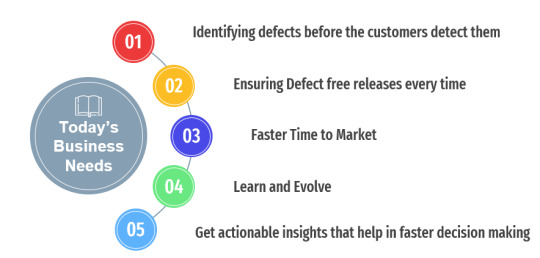
The current trends in AI Testing
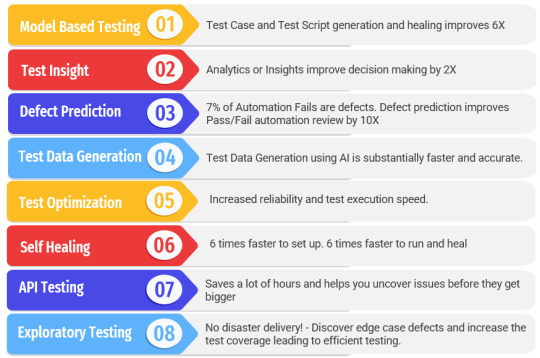
Here are the current trends in AI testing that help deliver the business needs along with the delivery of flawless applications and enhanced user experience.
1. Model Based Testing continues to get better and better, decreasing the effort needed to create and maintain automation.
This is an application of model-based design where test scripts are automatically generated, executed, and checked based on formal specifications of the system under test.
Impact – Test Case and Test Script generation and healing improves 6X
2. Test Insight is moving into mainstream and can help you shape and measure your testing efforts, quality and product life cycle.
They help you with test insights into the entire CI/CD pipeline to understand the impact every change is having on the product and provide guidance and strategic benefits to test management.
Impact – Test Analytics or Insights improve decision making by 2X
3. Defect Prediction can help you save enormous amounts of time in diagnosing and triaging automation Pass/Fail.
Quality comes when you have proper defect triaging/reporting and no noise. The AI tools share an in-depth analysis of automation failures to help the teams reduce their triage time
Impact – 7% of Automation Fails are defects. Defect prediction improves Pass/Fail automation review by 10X
4. Test Data Generation is the biggest challenge for ensuring an excellent testing process and many companies have been focused in this area and rapid advancements are being achieved. With the power of AI and analytics, you can generate data that comes as close as possible to your production data without revealing any sensitive information.
The AI based tools help you analyze a UI and identify a series of test cases that predict the user behavior. It also updates your test data based on newly added functionalities to the system along with the ability to identify and prioritize the test cases for execution.
Impact – Test Data Generation using AI is substantially faster and accurate.
5. Test Optimization is making the test process efficient without any quality compromises.
To speed up and optimize the testing in agile and DevOps environments, World Quality Report recommends a new option – the use of AI to optimize test cases.
AI systems are ideal for determining the area to test as well as the method to test and to failover.
Impact – Increased reliability and test execution speed.
6. Self Healing is the need of the hour as It helps teams to move from defect-based resolution to real-time issue resolution. It’s the ability to update the test cases and test scripts when the UI or API changes.
The complexity of applications increases exponentially as new features are added to the existing functionality. The AI ML power combo can learn if there is a change made, and then automatically modify the test automation script to fix the problem.
Impact – 6 times faster to set up. 6 times faster to run and heal
7. API Testing is the latest trend in the testing community with organizations moving to cloud computing. as it emphasizes the testing of business logic, data responses and security, and performance bottlenecks. With teams moving to microservices architecture, the usage and testing of APIs are on the rise.
Impact – Saves a lot of hours and helps you uncover issues before they get bigger
8. Exploratory Testing has gathered momentum in recent years as it can help testers explore the application beyond the limits of scripted tests.
Exploratory Testing helps to reveal bugs that would go undiscovered during the structured phase of testing. It’s a simultaneous process where you can perform test design and test execution at the same time.
Impact – No disaster delivery! – Discover edge case defects and increase the test coverage leading to efficient testing.
Here’s an interesting whitepaper that talks about the software testing trends forecast and euphoria around Artificial Intelligence – Hype versus Reality. Along with the overall trends of Intelligent Test Automation that we just talked about, the paper dives into the insights and innovations developed by technologically dexterous companies and provides our estimate of the impact that using AI would have in the near term.
Conclusion
With applications becoming complex, teams often struggle with multiple challenges. For example, testing teams need to work collaboratively with the development team on every product release, identifying issues, and fixing them within timelines. With the world moving toward Agile and DevOps, the scalability to changing requirements becomes slow with inefficiencies and delays as teams lack necessary new-age technological skill sets.
With every organization embracing Artificial Intelligence and Machine Learning technologies, CI/CD model, Agile and DevOps practices across all domains, the push for high quality product releases through rapid release cycles are at an all time high. Hence, these next-generation trends are exceedingly important for teams and organizations to accelerate the testing process.
Now that you are aware of the latest trends, let’s look at the innovative tools that will help you jump start your testing.
If this has piqued your interest and you want to know more, then please click here and schedule a demo, or reach out to us at [email protected].
If you like this blog series please like/follow us Webomates or Aseem.
0 notes
Text
How To Calculate The ROI Of Test Automation

Understanding ROI in Test Automation
In the era of data-driven decision-making, leadership rarely invests a single dollar from the business budget without having a clear grasp of the projected returns. Agile teams in particular find themselves in the limelight, having to present their work and explain why test automation should be used together with other crucial tools.
The benefits of test automation extend beyond testers. Test automation also benefits the developers within each feature’s team as they too take an active part in test automation. It involves using automated testing tools and scripts to execute tests, compare actual results to expected outcomes, and report test results. This approach offers a plethora of benefits such as increased test coverage, faster test execution, and early defect identification.
This article explores the significance of test automation along with the formula to calculate Return on Investment (ROI). Additionally, it lists a comparative table of benefits obtained from test automation.
The Formula: Measuring ROI
ROI is a critical metric that evaluates the effectiveness of an investment. When referring to test automation, ROI weighs the costs involved in implementing and maintaining automated tests against the benefits gained from improved testing efficiency and quality.
You can use the following formula to calculate ROI.

While there are various factors that contribute to ROI, you’ll need to understand the cost and time benefits associated with test automation to use the formula. Also, it’s just a metric that gives you the approximate return value you can get by embedding an automation strategy into your QA.
Calculating Time Benefits : A significant aspect of ROI is how test automation contributes to faster time-to-market. Calculate the time saved through automation in test execution, test case creation, and regression testing. Not only does automation improve testing efficiency, but it also frees up valuable resources for more strategic and creative tasks.
Calculating Cost Benefits : It’s important to account for all expenses related to automation. By assessing the potential cost savings, teams can make informed decisions about implementing the test automation. You can also consider both short-term and long-term savings, including reduced resoiurces costs and improved application quality.
Keys Points to Consider
Before you start calculating, you should be aware that it is quite challenging to arrive at quantifiable metrics. You need to approach test automation ROI as an estimation rather than an exact number.
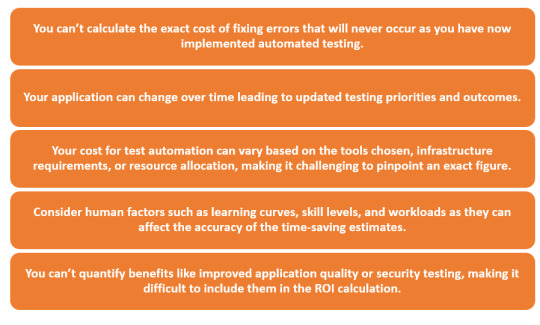
The Perks of Embracing Cloud Testing
Testing as a Service enables the teams to focus on higher-value priorities like defect resolution and quality analysis. It creates test cases and test scripts and keeps them up-to-date.
Unlike traditional testing, cloud-based testing resources can be dynamically scaled up or down as per the project’s requirements. In a time when software development workloads can be unpredictable and differ greatly between different projects, this adaptability is crucial. Overall, adopting cloud testing can result in better quality, faster time-to-market, cost savings, and higher efficiency for your applications.
Partner with Webomates to get maximum ROI by implementing these principles.

Connect with us to discover how you can redefine and transform your software testing with Intelligent Automation services.
If you are interested in learning more about Webomates CQ service please click here and schedule a demo, or reach out to us at [email protected]
0 notes
Text
Best AI Test Automation Tool For Agile

Navigating Testing Challenges for New Ventures with Webomates CQ
As easy as it may sound, starting a new venture, especially when it comes to application development and testing, is filled with multiple challenges and roadblocks. New infrastructure, new development and testing tools and technologies, new partnerships, new customer segments, unknown costs — this complex terrain is uncharted.
Testing Challenges for New Ventures
Customer preferences are ever-changing. And new ventures must be agile and scalable in order to guarantee good user experience. That means, your development and testing teams must be agile and quick to respond to feedback.
Some of the common challenges faced by new ventures are:
Low Production Quality: Working on new feature developments in a short sprinted Agile framework and releasing them to the end users with limited regression translates to False sense of Quality — leading to usability and customers’ dissatisfaction.
Limited resources: Due to limited budgets and smaller teams, the quality of testing could be compromised.
Time constraints: A rush to release features quickly can lead to inadequate testing.
Lack of expertise: End-to-end testing requires domain experts
Lack of scalability: Automation does not automatically scale with growth
Testing Tools and Infrastructure: Acquiring and managing the testing tools and infrastructure can be very expensive leading to budget constraints.
Lack of Continuous Testing: Implementing testing in line with a fast-paced development cycle can be a significant challenge.
Rethink your business with Webomates
When competition is fierce, your success depends on your level of innovation and time to market. So, how can teams make the most of today’s unique opportunities, while mitigating the accompanying risks?
Cloud testing has become an urgent imperative for creating a sustainable advantage for teams, as it can ensure resilience, faster customer feedback, speed, and overall cost reduction.
Our goal…
Making sure applications don’t just ‘work’ but are defect-free and deliver seamless user experience.
Our Solutions…
Explore how high-impact intelligent test automation solutions can enhance your processes and boost your team’s productivity.
Your benefits…
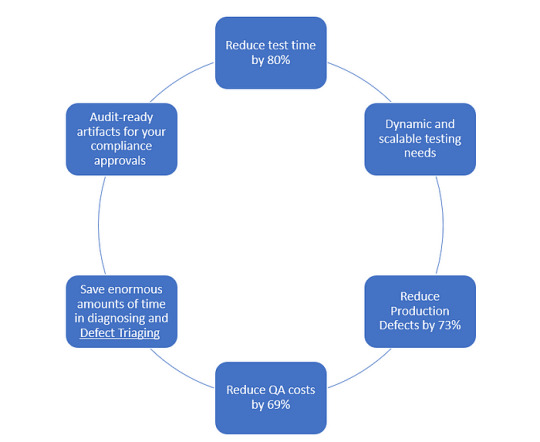
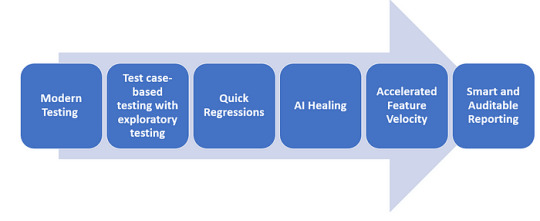
Modern Testing
Having attained the AWS DevOps competency status helps Webomates embrace DevOps. Its Continuous Testing solution helps accelerate your team’s feature velocity and ensure rapid and frequent quality releases.
Test case-based testing with exploratory testing
As test case-based testing follows a predefined script, there are chances that a bug may not fall in the script’s scope. When you combine the strengths of exploratory testing on top of test cases, you expand the scope of the test ensuring you uncover all defects.
Quick Regressions
Each release of a new product or enhancement to an existing release increases the complexity of testing and effective regression testing can greatly mitigate the business risk.
AI Healing
Did you know that 80% of the testing time goes in maintaining the automation? Our patent pending AI-Healing uses AI and ML algorithms to dynamically adjust their behavior based on the changing environments. The system can identify the false positives and also self-heal the false positives without human intervention and run the test within the same cycle. Remarkably, this entire AI healing healing process takes just hours, not days or weeks. And the automation is always up to date.
Accelerated Feature Velocity
Feature velocity gives an indication of how fast new features can be added to a product. Story points to measure the team’s current and expected deliveries. Automating the test case generation and execution process allows testing teams to focus on more critical and complex test scenarios, thereby increasing the team’s feature velocity.
Smart and Auditable Reporting
Our smart reporting includes detailed testing results and comprehensive analysis along with actionable triaged defects. This provides the stakeholders with a deeper understanding of the testing results, making it easier to make data-driven informed decisions and prioritize actions.
This is particularly useful across industries with strict compliance requirements, such as healthcare or finance, where a clear audit trail of all testing activities is necessary for regulatory and compliance purposes.
Client Success Stories
Our scale of collaboration and testing capabilities enable us to address vulnerabilities quickly or prevent them entirely. We have 9 patented AI tools and human expertise always at hand to help you. We have helped our esteemed clients achieve tremendous benefits by implementing these solutions.
We helped Rackspace Technology, Inc. test 14 IT applications on browsers, mobile, and API. They observed a remarkable 90% reduction in year-over-year production defects, coupled with an impressive 11-fold increase in feature velocity.
We enabled TMRW to begin testing the MVP of its Automated Cryo Specimen Management Platform for IVF. The auditable reports generated by our platform facilitated the achievement of FDA approval for their product.
Webomates has successfully completed SBIR Phase 1 and Phase 2 with the US Airforce, by demonstrating the ability to help organizations achieve scalability and agility while overcoming the typical traditional testing bottlenecks.
Take the first step, make the move!
Despite recent major advancements in AI technologies, only a few teams have made use of them. Adopting AI and ML-powered automation solutions will drastically transform your operations because they offer such a wide range of benefits related to Intelligent Automation.
AI is there to help you increase your efficiency! Introduce your team to AI Testing for improved efficiency and speed up your software delivery!
Please reach out to us at [email protected] to learn more about our AI-powered software testing solutions and how it can help you improve your business outcomes!
Tag: AI test automation, AI Testing, Artificial Intelligence, Automation Testing, Best AI test automation tool
#AI test automation#AI Testing#Artificial Intelligence#Automation Testing#Best AI test automation tool
0 notes
Text
End-to-End Testing vs Regression Testing
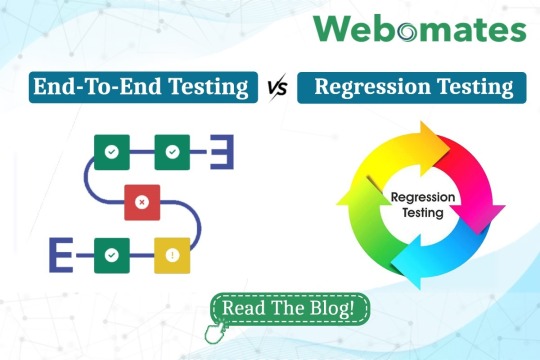
Software testing is a crucial step in ensuring an application’s reliability and functionality. As you increase test coverage, the quality of your application testing will increase. Regression testing and end-to-end testing focus on several testing facets to guarantee complete end-user satisfaction.
While End-to-End Testing focuses on the testing of the entire user flow and integrated components, Regression Testing targets specific functionalities and validates the impact of code changes. You need to understand their differences to implement an effective testing strategy.
Key Differences
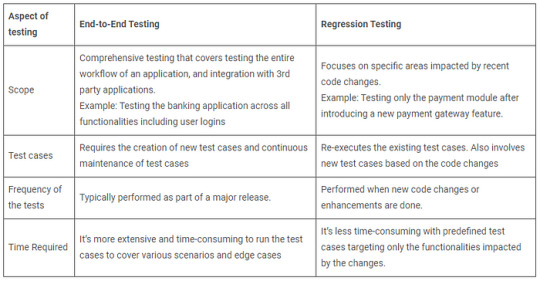
When do you need End-to-End Testing?
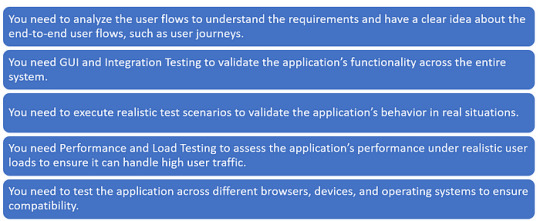
Pro Tip: Webomates offers code coverage as an optional add-on to AI test automation. Follow these 8 best practices to master end-to-end testing to ensure a seamless user experience and better product quality.
When do you need Regression Testing?
Regression testing is more like a time traveler — traversing across different versions of the application, ensuring that the previous application functionalities are still preserved today even after new changes.

Pro Tip: The process of regression testing includes selecting the right test cases, and determining the testing frequency and types of regression required to be carried out. Webomates helps you scale up by getting build checks done via its 3 types of regression testing services that provide the maximum quality.
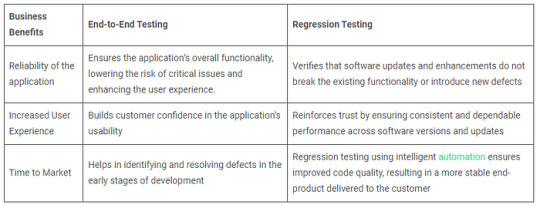
How can Webomates Help?
Regression testing and end-to-end testing both play crucial roles in assuring a seamless and error-free user experience, all while protecting your application against potential vulnerabilities.
As a cutting-edge cloud-based Testing as a Service platform, Webomates uses AI to reimagine the testing process. The patented tool like AI Test Strategy and Creator tool help you in devising a well-rounded test strategy for the software. By creating and automating the appropriate test cases, their AI Modeller engine can help you cut the human work required to write or maintain the test suite by more than 50%.
To find out more about what Webomates Intelligent Testing services can do for your business, get In touch with us today.
Please click here and schedule a demo, or reach out to us at [email protected]
1 note
·
View note
Text
9 Reasons Why Enterprise Testing Fails You

Competition creates pressure. Today, teams are under enormous pressure to deliver releases with increased speed and quality.
According to GitLab’s research, nearly 60% of survey respondents said their organizations deploy multiple times a day, once a day, or once every few days. Just 11% said they deploy once a month and only 8% said every few months. This highlights how important it is to be agile — both in development and testing.
Top reasons why Enterprise testing fails
Yesterday’s software testing practices can’t keep up with the pace of development and changing business priorities today. Most companies fail to recognize the constantly evolving testing landscape, and the required steps to overcome it.

Lack of Testing due to Unrealistic Time Expectations
Development teams manage, enhance and validate applications in a short sprinted Agile framework and release them to the end users with limited regression testing. This lack of testing translates to a False sense of Quality — thereby a failure to deliver the fanatical experience they promise.
Regression testing plays a crucial role in achieving a stable version of the software by finding defects before production deployment.
Pro Tip: With its 3 types of regression testing services, Webomates CQ is really quick in initiating the regression in just 3 minutes based on the regression type, platforms, and the target environment selected.
Outdated Test Cases & Suite
The number of changes in the testing code is proportional to the changes made by the developer in the application. It is very difficult to identify which test cases should be modified or added.
You need Self-healing scripts that help in test script maintenance by automatically detecting and resolving issues that arise during the execution of test scripts.
Pro Tip: Webomates CQ provides patented AiHealing which is carried out during the software regression cycle within the 24-hour or 8-hour window.
Lack of Exploratory Testing
As test case-based testing follows a predefined script, there are chances that a bug may not fall in the script’s scope. To overcome this challenge, you need Exploratory testing using a rotating vector-based approach that pushes the envelope in each regression looking to find new defects in the software release that are outside of the defined test cases.
Pro Tip: Webomates leverages the strengths of exploratory testing on top of test cases in regression testing to expand the scope of the test and take the quality to the next level.
Enormous Amount of Time Lost in Defect Triaging
Defects are bound to be detected while boosting feature velocity, but the key is to find them early before production. The best way to achieve this is by setting up a proper tracking system that can identify defects at the right time (as early as possible), triage them, and report them to the concerned stakeholders to improve the quality process.
Pro Tip: Webomates Defect Triaging feature shares a comprehensive triaged defect report that includes defect summary, steps for replicating the defect, a video of actual bug instances, priority suggestions, and test cases mapped with the defect.
Not Embracing Shift-Left Testing
The cost of fixing a defect rises exponentially as you move closer to production, along with compromised user experience, functionality, and security. One way to mitigate risks and eliminate surprises is by performing Shift-Left testing — where UI, API, load, and security testing are done early on rather than towards the end of application development.
Pro Tip: This makes it a lot easier to identify and fix the defects in the staging environment itself, enabling faster, better, and quality applications.
Engage in Test Automation
Focusing on manual testing can slow down the testing process and lead to inconsistent test execution, mainly when dealing with repetitive tasks or large-scale testing requirements. With test automation, developers and testers can automate the entire build-to-test process across all the stages of software development.
Pro Tip: In this DevOps-driven landscape, it is highly recommended to adopt test automation in order to avail maximum benefit. AI-based test automation includes UI Testing, API Testing, along with non-functional testing.
Poor and Insufficient Test Data
The biggest challenge for ensuring an excellent testing process and reliability is the lack of diverse and quality test data. Test data is the generation of data that comes as close as possible to your production data without revealing any sensitive information — all guided by artificial intelligence and analytics.
Pro Tip: Use Generative AI to prepare extensive data sets including edge cases, thereby accelerating testing phases and enhancing overall efficiency. Additionally, you can also use Predictive analysis to create realistic test data by analyzing the existing data patterns.
Lack of Cloud Infrastructure Adoption
Managing IT infrastructure involves manual, complex, and mundane processes like setting up the servers, configuring them, deploying the applications, and managing the load whenever required. Lack of cloud infrastructure adoption can restrict scalability, flexibility, and cost-effectiveness, making it more difficult to build and maintain reliable testing environments.
Today, the cloud is a catalyst for any company’s growth. Products are now moving to the cloud, and so is Testing. Testing as a Service (TaaS) — also known as On-Demand testing service — helps you scale with agility and overcome the typical traditional testing bottlenecks.
Pro-Tip: Webomates — a cloud-based testing platform, is powered by a range of patented AI-infused tools. Take a look at this animation and know the three easy steps you can take to AI automate your application.
Inability to make intelligent and improved decisions
If you are a manager or part of the C-suite executives, you need data-driven insights that can help you make intelligent decisions. With a focus on solving critical business problems, test insights and analytics that help you improve product quality and effectiveness.
Pro-Tip: Use test insights into the entire CI/CD pipeline to understand the impact every change is having on the product. It also provides guidance and strategic benefits to test management.
Testing for the Future: How can Webomates Help?
User expectations are rising, and you need intelligent solutions to assist you in dealing with these challenges. You need to modernize the company with technology that promotes creativity and innovation, improves customer experiences, and equips the employees with the knowledge and tools necessary to make informed business decisions.
Identifying the gaps is the first step in moving forward. The next step is to create a plan and choose a service/tool that can assist you in bridging all of these gaps. AI-based testing helps to predict the best testing approach, anticipate and prevent mistakes, and enable the pace and scope of software releases.
Webomates is a complete Testing as a Service (TaaS) provider. Its cloud-native platform helps teams overcome the complexities of testing applications built using advanced technologies and perform both functional and non-functional tests.
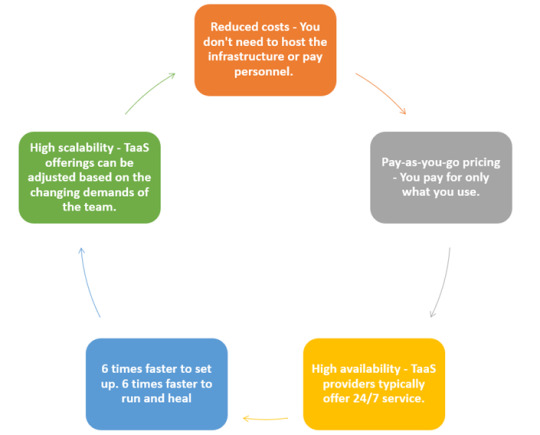
If you are interested in learning more about Webomates CQ service please click here and schedule a demo, or reach out to us at [email protected]
#enterprise software testing#Enterprise Testing Strategy#Software Testing#Test Automation#testing enterprise software
1 note
·
View note